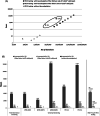Human T-lymphotropic virus in Irish blood donors: Impact on future testing strategy
- PMID: 35829653
- PMCID: PMC9539962
- DOI: 10.1111/trf.17017
Human T-lymphotropic virus in Irish blood donors: Impact on future testing strategy
Abstract
Aim: A risk-based approach to the testing of blood donations for Human T-Lymphotropic Virus (HTLV) should include an assessment of blood donation seroepidemiology. The objectives of the present study were to determine the proportion of HTLV positive units in Irish blood donations, and subsequently, to estimate the current risk of transfusion transmitted HTLV (TT-HTLV).
Methods: Over 3 million donations screened between 1996 and 2020, were included in the study (n = 3,666,253). Factors considered in the assessment of TT-HTLV risk included: (I) HTLV seropositivity, (ii) probability of a leucodepletion failure, and (iii) the HTLV testing strategy.
Results: Six HTLV positive donations were detected throughout the study period, all of them in previously unscreened blood donors (0.000164%; n = 6/3,666,253), 3 of whom had donated prior to the introduction of HLTV antibody testing. On average 0.11% of manufactured blood components assessed, failed to satisfy the leucodepletion quality assurance criteria of less than 1 × 106 cells/unit. In using these values to model the risk of TT-HTLV, it was shown that the combination of leucodepletion with either universal screening of all = donors, or selective testing of first-time donors, a possible HTLV transfusion transmitted infection would be prevented every 468-3776 years.
Conclusions: This is the first report on the proportion of HTLV positive in Irish blood donations (1996-2020) and will be used to inform blood donation screening policy in Ireland. Evidence is provided for recommending a selective HTLV donor screening algorithm in Ireland that is accompanied by a robust framework for continued surveillance of leucodepletion failure rate.
Keywords: HTLV; Ireland; blood; donation; epidemiology; human T-Lymphotropic virus; risk; seropositivity.
© 2022 The Authors. Transfusion published by Wiley Periodicals LLC on behalf of AABB.
Conflict of interest statement
The authors declare that there is no conflict of interest.
Figures

Similar articles
-
Low risk of human T-lymphotropic virus infection in U.S. blood donors; Is it time to consider a one-time selective testing approach?Transfusion. 2023 Apr;63(4):764-773. doi: 10.1111/trf.17279. Epub 2023 Feb 16. Transfusion. 2023. PMID: 36794656
-
The epidemiology of human T-cell lymphotropic virus types I and II in Canadian blood donors.Transfus Med. 2013 Oct;23(5):358-66. doi: 10.1111/tme.12057. Epub 2013 Jul 17. Transfus Med. 2013. PMID: 23859527
-
Decline in human T-cell lymphotropic virus seroprevalence in blood donors from Minas Gerais, Brazil over a 12-year period (2006-2017).J Med Virol. 2022 Nov;94(11):5535-5542. doi: 10.1002/jmv.28010. Epub 2022 Jul 29. J Med Virol. 2022. PMID: 35855523
-
Seroepidemiology of HTLV-I/II in Argentina: an overview.J Acquir Immune Defic Syndr. 2004 Mar 1;35(3):301-8. doi: 10.1097/00126334-200403010-00012. J Acquir Immune Defic Syndr. 2004. PMID: 15076246 Review.
-
Human T-lymphotropic virus and transfusion safety: does one size fit all?Transfusion. 2016 Jan;56(1):249-60. doi: 10.1111/trf.13329. Epub 2015 Sep 21. Transfusion. 2016. PMID: 26388300 Review.
References
-
- Willems L, Hasegawa H, Accolla R, Bangham C, Bazarbachi A, Bertazzoni U, et al. Reducing the global burden of HTLV‐1 infection: an agenda for research and action. Antivir Res. 2017;137:41–8. - PubMed
-
- Manns A, Hisada M, La Grenade L. Human T‐lymphotropic virus type I infection. Lancet. 1999;353:1951–8. - PubMed
-
- Martin F, Fedina A, Youshya S, Taylor GP. A 15‐year prospective longitudinal study of disease progression in patients with HTLV‐1 associated myelopathy in the UK. J Neurol Neurosurg Psychiatry. 2010;81:1336–40. - PubMed
-
- Murphy EL, Glynn SA, Fridey J, Smith JW, Sacher RA, Nass CC, et al. Increased incidence of infectious diseases during prospective follow‐up of human T‐lymphotropic virus type II‐ and I‐infected blood donors. Retrovirus epidemiology donor study. Arch Intern Med. 1999;159:1485–91. - PubMed
Publication types
MeSH terms
LinkOut - more resources
Full Text Sources

